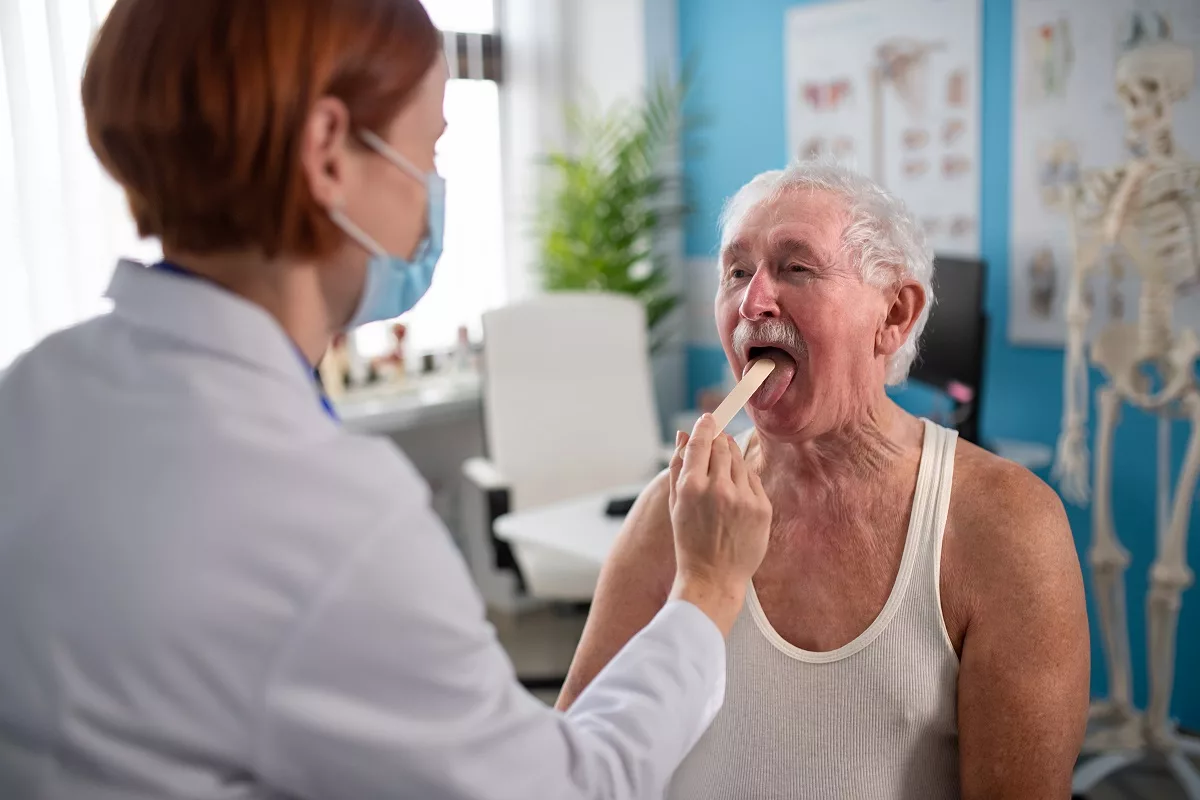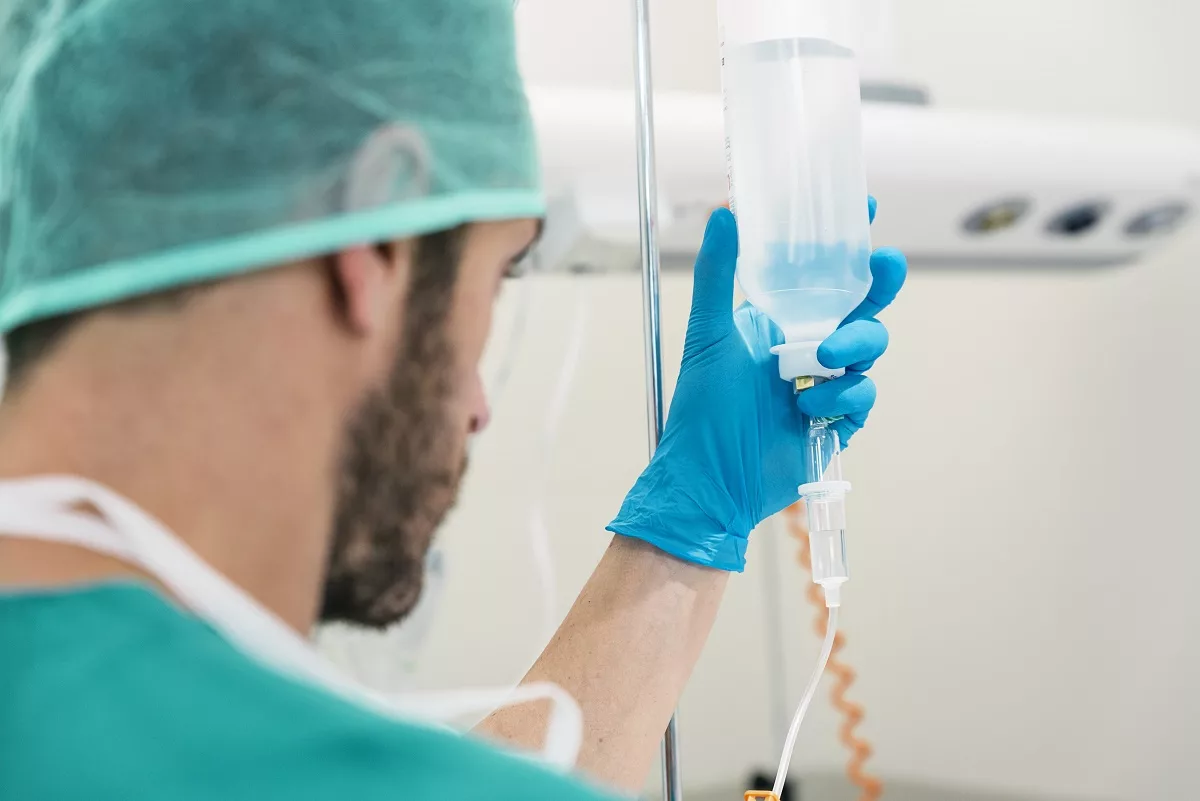A type of cancer that develops in the tissue of the salivary gland is known as salivary gland cancer. There are some organs in the mouth and throat that make saliva (also known as spit). People who develop this type of cancer may notice a lump in the mouth or jaw. Generally, this cancer is treatable, especially if it is found in the early stages. When it is found in advanced stages, the tumor may break and spread throughout the body. In such cases, it is quite difficult to treat it.
In general, the medical term “salivary gland cancer” is used for malignant (cancerous) tumors that negatively affect the salivary gland. This gland that produces saliva is located in the mouth and throat. The saliva helps the digestive system break down the food. In some cases, people may develop a benign (noncancerous) tumor in the salivary gland.
This type of cancer occurs rarely and accounts for approximately 1% of tumors that develop in the head and neck. Moreover, about 50% of all malignant salivary gland tumors are mucoepidermoid carcinoma and adenoid cystic carcinoma.
Symptoms
Only a small number of people who develop salivary gland cancer do not have symptoms. Usually, people with this type of cancer experience the following symptoms. Examples include:
- Weakness or numbness in the neck, jaw, mouth, or face
- Persistent pain in the face, jaw, mouth, or neck
- Difficulty moving facial muscles or opening the mouth completely
- Bleeding
- Swallowing problems
If you notice any of the previous symptoms, immediately contact your healthcare professional.
Causes
In most cases, physicians cannot identify the exact cause of salivary gland cancer. While tumors can appear in any of the salivary glands in or near the mouth, they often develop in the three major salivary glands. For example:
- Parotid glands (these glands are located inside the cheek)
- Submandibular glands (below the jawbone)
- Sublingual glands (along the mouth’s floor)
Almost all benign or malignant salivary gland tumors develop in the parotid glands.
In addition, some people may develop a tumor in the microscopic minor salivary glands that are located within the roof or floor of the mouth, the lining of the tongue and lips, and inside the cheeks, sinuses, nose, and voice box. While these tumors develop rarely, almost all are malignant.
When a tumor becomes too large, it may break and spread to other structures and organs in the body. These include the lungs, bones, liver, and others. In such cases, it is called metastatic cancer.
Risk Factors
While this type of cancer can affect anyone, there are certain factors that increase the risk of developing it. Check below some examples:
- Sex – Males are more prone to develop cancerous salivary gland tumors than females.
- Age – The risk of developing salivary gland cancer increases over 55 years old, especially if you are a male.
- Smoking
- Misuse of alcoholic beverages
- Radiation therapy – This therapy is often used to treat cancer. Sometimes, it may cause salivary gland cancer while treating other types of cancer.
- Certain occupations, including rubber products manufacturing, plumbing, asbestos mining, and leatherwork.
According to some recent studies, some people with viral infections (such as Epstein-Barr virus and human papillomavirus, or HPV) are at higher risk of developing salivary gland cancer. While these viral infections do not cause this type of cancer directly, more research is needed to understand the link between them.
What Are The Possible Complications of Salivary Gland Cancer?
People who develop this type of cancer may also experience some complications, especially if they do not get treatment. Sometimes, a benign tumor may become malignant. Check below some complications:
- Numbness or loss of sensation in the tongue or face
- Temporary or permanent facial paralysis
- Difficulty swallowing and eating
- Speaking problems
- Infections
- Bleeding and blood clots
- Frey’s syndrome (this is a rare complication of parotid gland surgery)
- Recurrent salivary gland cancer
This article does not have a full list of complications. However, you can talk with your physician about ways to reduce the risk of salivary gland cancer complications.
How to Prevent Salivary Gland Cancer?
Unfortunately, doctors do not know how to prevent this type of cancer because they do not fully understand why it happens. However, you can reduce the risk of developing it by stopping smoking and limiting or avoiding alcohol.
Diagnosis
Usually, the diagnosis of salivary gland cancer begins with a physical examination. They may also ask some questions about your symptoms and medical history. To confirm the conditions and rule out others that cause similar symptoms, physicians usually perform the following tests. For example:
- A CT (computerized tomography) scan – This is an imaging test used to make cross-sectional images of different structures and organs in the body.
- An MRI (magnetic resonance imaging) scan – This test uses magnets and radio waves to produce detailed images of internal body structures. It may help identify the exact location and size of the tumor.
- PET (positron emission tomography) scans – During this test, doctors will inject a small amount of radioactive material to determine whether the cancer has spread. Sometimes, doctors perform a PET and CT scan at the same time.
- Biopsy – This test involves collecting a small amount of affected tissue or testing under a microscope. It helps identify cancerous cells. Generally, this test is the only one that can confirm salivary gland tumors.
In addition, once you are diagnosed with this type of cancer, doctors may perform additional tests to determine the extent (stage) of the cancer. It often helps make the best treatment plan for you.
Treatment
While surgery is the best treatment to remove the tumors, it is not an option for all people who develop this type of cancer. Check below for additional treatments:
- Radiation therapy – This treatment involves a machine that delivers radiation to destroy cancerous cells. It uses powerful energy beams that often come from X-rays, protons, and other sources.
- Chemotherapy – This involves strong medicines to kill cancer cells. Physicians may recommend chemotherapy before surgery to shrink a large tumor or after surgery to destroy cancer cells that may remain. When surgery is not an option, they may prescribe radiation therapy and chemotherapy at the same time.
- Immunotherapy – In general, cancerous cells produce a substance that helps them hide from the immune system. Immunotherapy involves medications that boost the immune system to find and destroy cancerous cells.
- Targeted therapy – This therapy involves specific medicines that target a protein in the cancer cells, causing them to die.
- Radiosensitizers – These are medications used to make cancerous cells more sensitive to radiation.
In some cases, salivary gland cancer may return even after a successful treatment. For more details, discuss it with your healthcare professional.
Frequently Asked Questions
What is the survival rate for salivary gland cancer?
In general, if the tumor is localized, the 5-year survival rate is about 96%. However, this survival rate significantly decreases if the tumor breaks and spreads to other structures and organs in the body.
What are the first symptoms of salivary gland tumors?
These include:
- Numbness in the face
- Muscle weakness
- A lump of swelling on or near the jawbone, in the neck, or mouth
- Swallowing problems
- Difficulty opening the mouth widely
- Pain near the affected salivary gland
If you experience any of the previous symptoms, immediately contact your doctor.
Is a salivary gland tumor serious?
Usually yes, because most of them are malignant (cancerous), and without treatment, the tumor may spread throughout the body. If you have additional questions, ask your healthcare provider.




